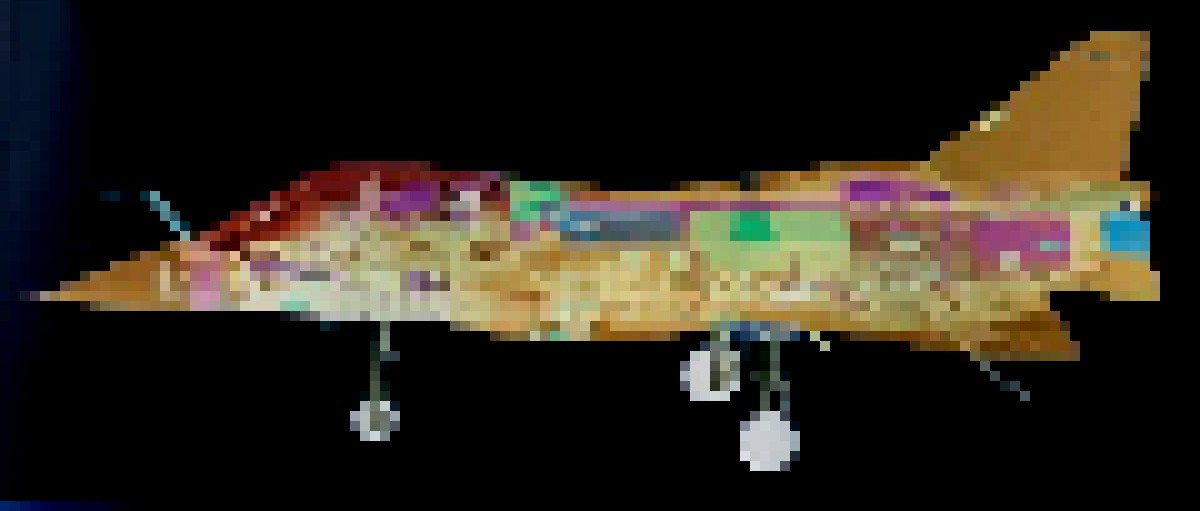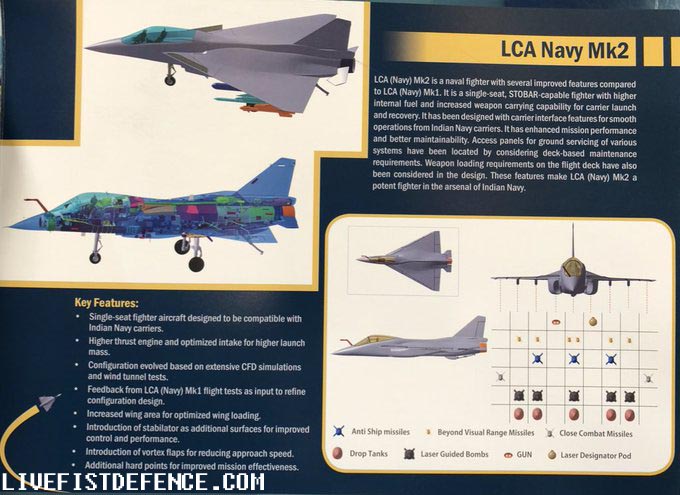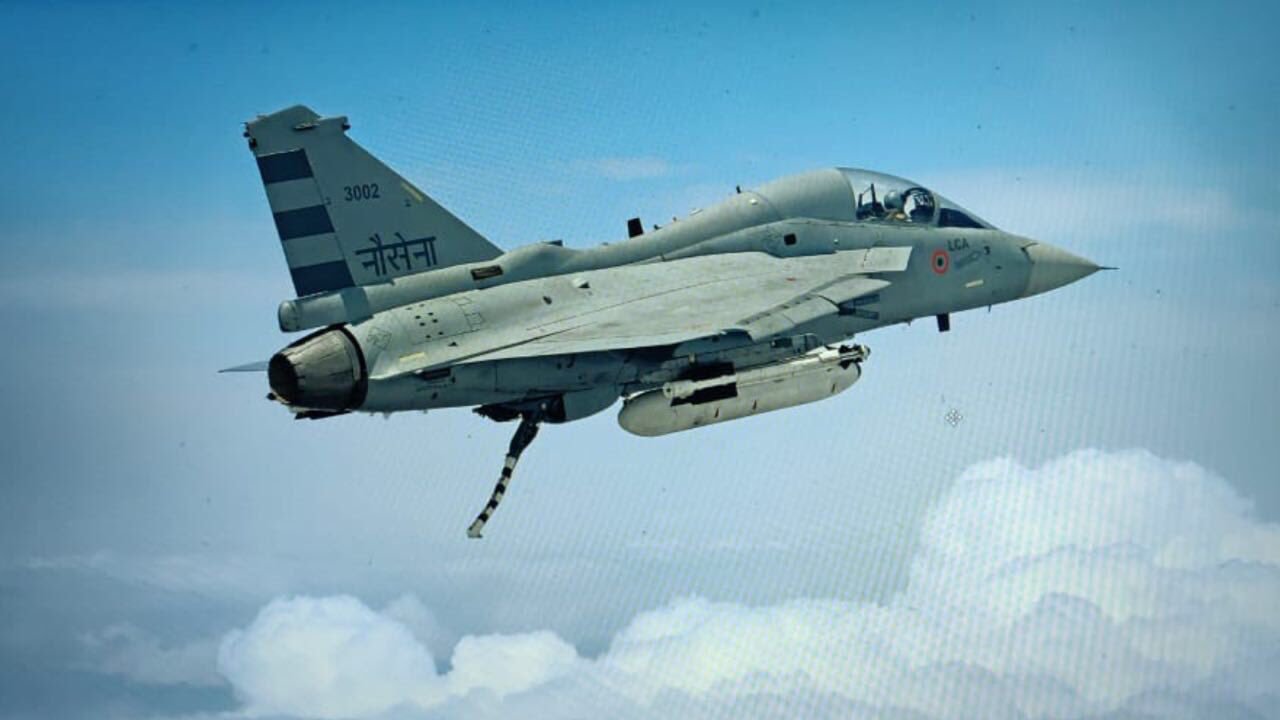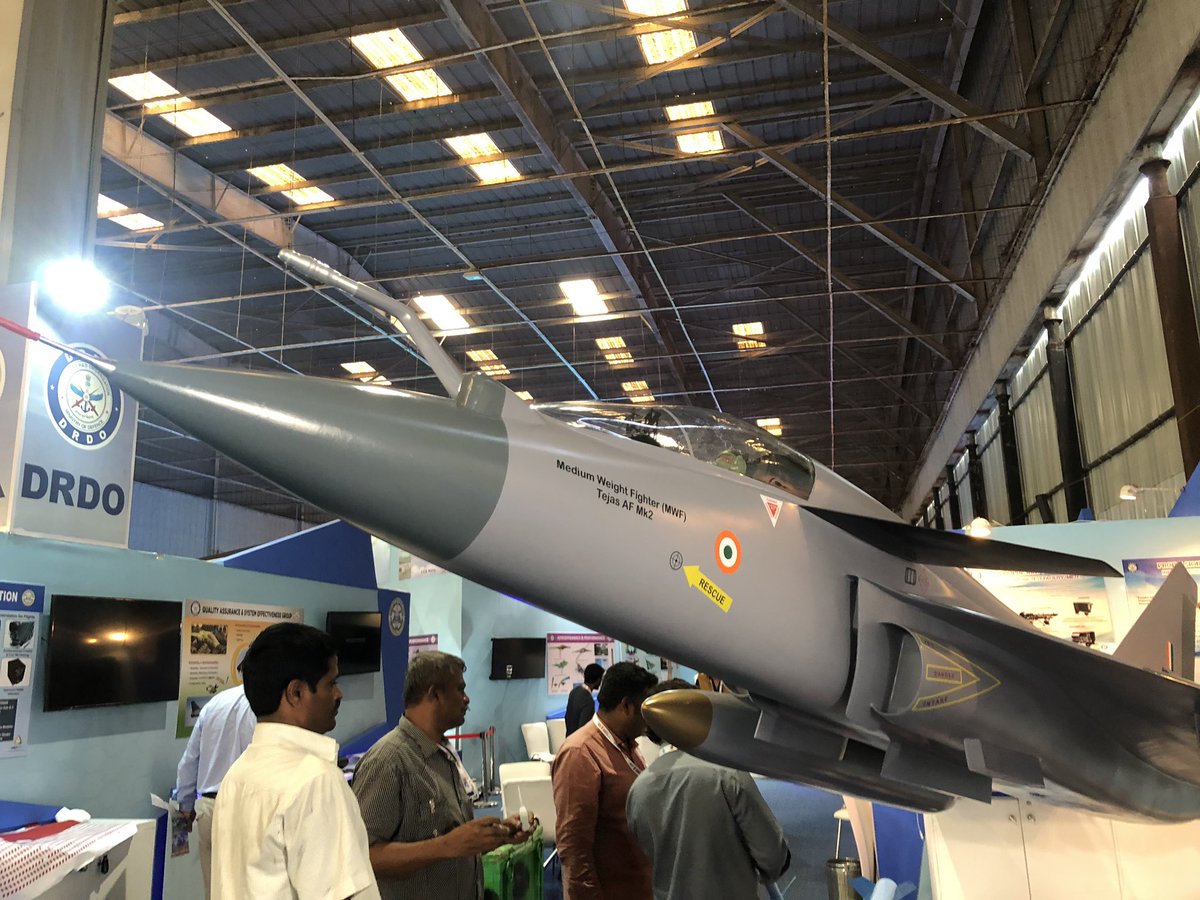
A new twin-engine naval fighter design proposal is taking shape at India’s principal combat aircraft design house in Bengaluru to supply the Indian Navy with a future fighter for its aircraft carriers. The proposed fighter, with officially stated plans for a first flight by 2026, isn’t a choice but a compulsion. And it effectively puts on hold the Mk.2 version of the single-engine naval Light Combat Aircraft (N-LCA).
The proposal is a dramatic shift in plans by the DRDO-administered Aeronautical Development Agency (ADA), which until as recently as February, had been fine-tuning design changes on the LCA Navy Mk.2. Plans on the new jet design were first revealed earlier this week on Delhi Defence Review here. But here’s the rub: the DRDO isn’t switching tracks willingly, but has rather been forced into pursuing a twin-engine design by the Indian Navy. After years of studies on the LCA Navy and the proposed LCA Navy Mk.2, the navy has made it clear it doesn’t want a single engine fighter.
The proposal, intended as a convergence of work done thus far on the LCA Navy Mk.2 and the twin engine design studies on the concept fifth generation AMCA stealth fighter, has an ambitious deadline right out the door.
The top leadership of ADA told Livefist on Tuesday, “The Indian Navy is looking for a twin-engine deck based fighter in lieu of the LCA Navy Mk.2. With confidence generated from AMCA design, we have developed twin engine competence. Hence configuration is currently being worked out. This is being targeted as a replacement for the MiG-29K with a first flight by 2026.”

The baseline LCA Navy is currently in flight test, and has completed a series of arrested landings this year at the Shore-based Test Facility in Goa. The proposed Mk.2 version of the LCA Navy, borne from the need from a higher performance fighter, was envisaged as a jet with a more powerful engine, increased internal fuel and weapons carrying capability, better mission performance and maintainability. In February this year, Livefist posted the first pictures of significant changes to the LCA Navy Mk.2 design, including the addition of tailplanes, larger wings and tweaked engine intakes:

The decision to curtail plans on the LCA Navy Mk.2 and instead pursue a twin-engine design isn’t surprising. The Indian Navy, while consistently supportive of the LCA Navy program, has made it clear it needs twin-engine fighters for its carrier decks.
“We are not ditching the LCA Navy Mk.2. The navy is adamant they do not want a single engine fighter. Hence we have to reconfigure. This decision has been forced on us. It involves a significant design effort which could be avoided if we continue with the single engine LCA Navy Mk.2,” a top ADA officer told Livefist.
A separate prospective future fighter selection contest for 57 such aircraft is likely to be a fight between two twin-engine jets — the Rafale and Boeing’s F/A-18 Super Hornet.
These are embryonic days for the new proposal, but the ADA leadership’s suggestion that the new jet will be proposed as a MiG-29K replacement indicates it will be built as a STOBAR jet for operations off the INS Vikramaditya and first Vikrant-class aircraft carriers. A first flight by 2026 also indicates the DRDO is setting itself a a very tight deadline for the full design and prototyping phase. The ADA is, however, confident that it can navigate this critical path diligently.

“We have all the elements required from both projects (LCA Navy and AMCA) to assemble the new design,” says the ADA leadership. “We are also equipped with knowledge of the pitfalls in the design and prototyping phase from past projects, so we have an adequate level of confidence. The bigger picture is that the next deck-based fighter of the Indian Navy should be an Indian design.”
The LCA Tejas is already in service with the Indian Air Force’s 45 Squadron in Sulur, Tamil Nadu, with more aircraft being inducted at a steady rate. The IAF will operate 123 aircraft in the Mk.1 and improved Mk.1A configurations. The LCA Tejas Mk.2 was revealed earlier this year in a new avatar, christened the Medium Weight Fighter (MWF), with the notable addition of canard foreplanes and a generally meatier frame. This will remain a single-engine fighter design, albeit with the baseline LCA’s F404 engine replaced with the more powerful F414.

While the project is still only a proposal, Livefist understands the Indian Navy has shown willingness to support the twin engine carrier fighter path, especially since it gives the navy a chance for closure on the LCA Navy, a project that has had dramatic ups and downs through the ongoing development cycle. The LCA Navy’s recent flight test successes come in the wake of steady turbulence, including a fight for the project’s very survival. While the LCA Navy Mk.2 is still only on paper, the Indian Navy is said to have been unimpressed with its performance parameters, given the cost and timelines at play.
A senior Indian Navy officer told Livefist, “Several performance concessions have had to be made on the LCA Navy. It is a creditable learning process and a lot has been proved. But if we are talking about a jet with reasonable carrier performance, and if we are to commit resources and valuable time to it, this is the window we have to make the decision to enforce our requirement for a twin-engine aircraft, which is generally a naval norm. Navalising an aircraft is always a complex process. If we are to go big with an indigenous fighter, we would like to work with the DRDO to get it right.”
With all the several variables, here’s what we can say with reasonable certainty:
The new design will be a twin-engined version of the LCA Navy Mk.2. While this will clearly involve major airframe changes, it almost definitely won’t go the AMCA way. The latter is a heavier (and purpose built stealth) fighter design, and while a naval AMCA has been part of overall plans, the new twin engine jet will likely seek to only incorporate twin-engine configuration studies gleaned on the AMCA program. While the LCA Navy Mk.2 effectively ends with this proposal, plans for a navalised AMCA theoretically continue. It appears likely that the new jet will be designed, like the AMCA, with a twin F414 engine configuration in mind.
As with all indigenous projects, the Indian Navy will be hoping that ambitious timelines don’t disrupt existing modernisation plans. As things stand, the newly proposed twin-engine fighter will likely be pursued parallel to the intended acquisition of 57 CATOBAR fighters for the proposed Vishal-class flat-top carriers.
Also read: Livefist’s Shiv Aroor flies in an LCA Tejas

Wow, this is a stunning news ! All the more because the Indian Navy isn’t completely “ditching” the N-Tejas, but is backing them to develop a twin-engine one. And the DRDO, even with this “negative” encouragement, is going ahead full throttle on a twin-engined design..
I hope the twin engined N-Tejas succeeds and is delivered in double time. maybe some quick consultancy from Boeing or Dassault can help speed up the process.
I think India should conduct area51 kind of facility where it would open up different aircraft and give them their touch to create a secret aircraft.
DRDO always struggle for make India a superpower.